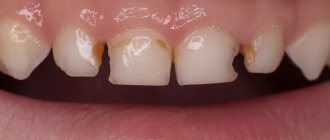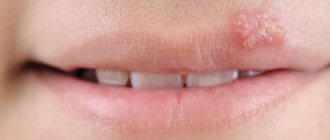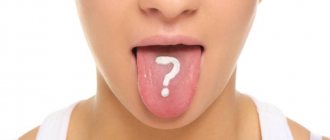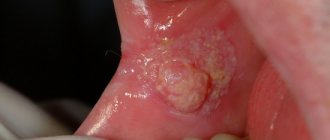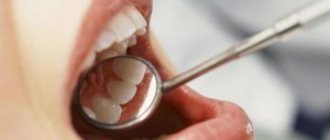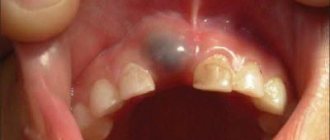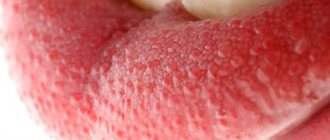What is it and how often does it happen
An intestinal infection is a disease that develops when viruses or bacteria enter the body and is manifested by diarrhea, vomiting, fever, weakness and dehydration.
According to WHO data for 2022, rotavirus infection accounted for 60% of cases of severe diarrhea in children under 5 years of age, and most of them were under one year of age. When the first symptoms appear in young children, it is necessary to seek medical help - up to 200 thousand children still die from rotavirus infection every year in the world, especially in developing countries.
What is hypersalivation?
Increased salivation can be attributed to natural physiological processes between the ages of 2 and 8 months.
Intensive production of excessive amounts of secretion by the salivary glands is called hypersalivation.
The etiology of ptyalism can be pathological or physiological. In newborns, due to underdevelopment of the salivary glands, there is no salivation.
Increased salivation can be attributed to natural physiological processes between the ages of 2 and 8 months.
If signs of hypersalivation appear at an older age, then this indicates the presence of pathological processes in the body.
In medical practice, the following types of hypersalivation are distinguished:
- True. Associated with increased secretion of the salivary glands. Depending on the etiology, it can be bulbar, somatic, medicinal and psychogenic.
- False. Caused by dysfunction of the physiological process of swallowing saliva.
Important! With a severe degree of development of ptyalism, the integrity of the skin may be damaged under the influence of the constituent components of saliva.
How and when can you become infected?
Sources of rotavirus infection can be a sick child or an asymptomatic carrier. The virus is excreted from the body in the stool and gets onto household items, clothing and food with dirty hands.
Doctors often call rotavirus infection a “dirty hands” disease.
A healthy child can introduce the virus into the body first by touching things, and then by touching the face, and also by eating unwashed vegetables and fruits.
Rotavirus outbreaks typically occur in winter, early spring, or late fall because viruses persist in the environment longer at low temperatures. In summer, food poisoning occurs more often - the cause is usually bacterial contamination of food, and bacteria multiply better in the hot season.
Causes of increased drooling in a child
In medical practice, certain provoking factors for the development of hypersalivation in children of different ages are identified.
Among them, the most common reasons why salivation is increased are:
| Name | Description and age | Additional symptoms |
| Teething | A natural physiological process between the ages of six months and 4 years. Gradual increase in the amount of saliva production. It is characterized by the constant release of transparent saliva of a liquid consistency from the oral cavity. | Hyperthermia of the whole body, increased tearfulness, nervousness, sleep disturbance, constant anxiety and rapid fatigue. The gums are inflamed and red, itchy and painful. |
| Oral diseases | A pathological condition associated with the development of inflammation in the oral cavity at any age in children. The most common diseases include stomatitis and gingivitis. Accompanied by a large amount of saliva with white opaque inclusions. It is also possible that there is blood in the saliva. | With stomatitis, ulcers are observed on the oral mucosa, which at an advanced stage can bleed. Also, the surface of the tongue becomes covered with a whitish coating and severe pain appears. With gingivitis, inflammatory processes are observed in the gum tissue, accompanied by local hyperthermia, swelling and discoloration. |
| Gastrointestinal diseases | They can develop in a child at any age. The most commonly diagnosed pathologies in this case include: pancreatitis, peptic ulcer, enteritis, hepatitis, gastritis. | Large salivation is accompanied by the following symptoms: diarrhea, nausea, vomiting, pain in the abdominal cavity, heartburn, constipation. |
| Nervous system diseases | Abnormal development of the brain and its congenital injuries. Certain forms of cerebral palsy. Also with systematic severe stress or high psycho-emotional overexcitation. These conditions can develop at any age. Therefore, salivation increases regardless of age category. | Increased nervousness and tearfulness of the child. Inconsistency of development with the age of the baby and his lack of correct reactions to a certain stimulus. |
| Fungal infections | Damage to the oral mucosa by pathogenic microorganisms and its inflammation is accompanied by increased hypersalivation. The secreted saliva most often contains white flakes, which are formed during candidiasis and other fungal infections. The risk group includes children of any age category. | The presence of a white coating on the surface of the tongue, lack of appetite, pain when swallowing and chewing food. Constant or periodic feeling of burning and itching in the mouth. |
| Poisoning | Intoxication of the body with toxic substances, potent drugs, heavy metals and concentrated chemicals. Age category of children from 2 years and older. | Vomiting, dizziness, irregular breathing, fainting, diarrhea, watery eyes, dermatological rashes. Formation of ulcers due to chemical burns. |
| Inability to swallow saliva | This pathological process manifests itself in children aged 1 to 4 years. The swallowing reflex is not developed in children with allergies, since due to allergic rhinitis the child uses his mouth for breathing. Therefore, saliva flows out on its own. | Redness of the eyes, difficulty breathing, dermatological rashes, cough. |
| Allergy | Hypersalivation of this etiology develops in children of any age. Increased secretion of saliva (a lot of saliva) is observed when consuming certain foods that are allergens. It can also be skin contact or inhalation of allergens. | Runny nose, rashes in the nasolabial fold area, fever, watery eyes, itching and burning. Increased moodiness and tearfulness. |
| Worm infestations | Excessive secretion of saliva can be caused by the presence of various types of parasites in the child’s body. A special risk group includes children of any age who come into contact with animals, open soil and frequent games in dirty sandboxes. Eating unwashed vegetables and fruits is also dangerous. | Saliva becomes cloudy. Increased anxiety in the child, sudden loss of appetite and body weight, itching in the anal area, nausea, vomiting. |
| Side effects of drugs | When undergoing a therapeutic course using medications, hypersalivation acts as a side effect. | Additional symptoms may include various signs corresponding to the side effects of each group of drugs. |
| Injuries, etc. | Often one of the consequences of a fall is inflammation of the salivary glands, which provokes increased secretion of saliva. Most often, this cause of hypersalivation is observed in children over 6 years of age. | Damage and inflammation of the skin in the area of the grass. Pain on palpation. |
Important! There are many factors that provoke increased salivation in children. Among them it is also worth highlighting a number of neurological pathologies, diseases of the eyes and ears, as well as diphtheria.
What happens when a virus enters the body
With food or saliva - if a child licks his dirty hands - rotavirus enters the mouth, then into the stomach and intestines. There it penetrates the cells of the superficial layer lining the intestines from the inside and damages them. Unlike bacteria, viruses do not lead to significant inflammation of cells; they disrupt the functioning of the body's enzyme systems to a greater extent.
Carbohydrates stop being broken down and accumulate in the intestines - the balance of fluid, potassium and sodium in the body is disrupted. A lot of water, electrolytes, organic acids and carbon dioxide collect in the intestine, which normally should not be there. Because of them, vomiting and diarrhea begin and gas formation increases. At the age of up to 5 years, intestinal cells are not yet mature enough - rotavirus affects up to 2/3 of them, so children get sick more often and more severely than adults.
Most often, the first symptom is vomiting. It occurs simultaneously with or precedes diarrhea and usually lasts 1-2 days. The stool is usually watery, foamy, yellow in color with a small amount of mucus. In infants it can occur up to 20 times a day. The duration of diarrhea is on average 3-7 days, but there are cases of up to two weeks - usually in children under one year old. Sometimes the infection begins with a fever of up to 38-39 ° C, symptoms of ARVI - cough, runny nose, sore throat. Children can also refuse to eat and literally collapse.
Normalization of nasal breathing function in infants. New approaches
Impaired breathing through the nose can cause a number of disorders in children in the first months of life. In infants, the act of sucking and swallowing is disrupted, the baby begins to worry, refuses to eat, and sometimes gains weight more slowly. Lack of nasal breathing can even lead to increased intracranial pressure and dysfunction of the central nervous system. At the same time, the child becomes restless. Some children have sleep disturbances. Severe and prolonged difficulty in nasal breathing leads to hypoxia, which slows down development. Children with impaired nasal breathing begin to breathe through their mouths, and cold air entering the respiratory tract easily leads to colds; such children get sick more often.
Thus, the state of breathing through the nose should be monitored starting from the birth of the child. It is necessary to care for the baby’s nasal cavity daily - carefully, using special cotton swabs or turundas, remove crusts and thick mucus with rotational movements, after dropping 1-2 drops of sterile petroleum jelly or vegetable oil or isotonic solutions that help thin the mucus and facilitate its removal from the nose, enhancing resistance of the nasal mucosa to pathogenic bacteria and viruses, for example, Otrivin Baby drops for irrigation - a sterile isotonic solution of sodium chloride 0.74%, the pH level of which is close to the natural secretory fluid of the nasal mucosa. Otrivin Baby is used intranasally, a few drops from a dropper bottle 2-4 times in each nasal passage daily.
If a child has a large amount of mucus accumulated in the nose, which happens after heavy regurgitation or with a runny nose, you can use a special mucus pump or a small enema bottle and carefully suck out the contents of the nasal cavity. It seems convenient to use an Otrivin Baby aspirator, specially designed so that air cannot penetrate into the nasal passages and mucus does not get back into the nose. Replaceable disposable aspirator tips will help avoid re-infection. In addition, it is necessary to remember the need for regular examination not only by a pediatrician, but also by a pediatric otolaryngologist. Specifically for children, since the upper respiratory tract of children, as well as the child’s body as a whole, has a number of anatomical and physiological characteristics, and even minor inflammation of the nasal mucosa causes swelling in infants and, as a result, difficulty breathing through the nose.
The nasal cavity (cavum nasii) (Fig. 1) is located between the oral cavity and the anterior cranial fossa, paired maxillary and paired ethmoid bones. The nasal septum divides it sagittally into two halves, opening anteriorly with the nostrils and posteriorly, into the nasopharynx, with the choanae. Both halves of the nasal cavity are surrounded by paranasal sinuses: the maxillary, ethmoidal labyrinth, frontal and sphenoid, each of which communicates with the nasal cavity by an anastomosis. The nasal cavity has four walls: inferior, superior, medial and lateral.
The lower wall (bottom of the nasal cavity) is formed by two palatine processes of the upper jaw and, in a small area posteriorly, by two horizontal plates of the palatine bone (hard palate), connected along the midline by a suture. Congenital violations of this suture lead to various defects (for example, non-fusion of the hard palate). In front and in the middle in the bottom of the nasal cavity there is a nasopalatine canal (canalis incisivus), through which the nerve and artery of the same name pass into the oral cavity, anastomosing in the canal with the great palatine artery. In newborns, the bottom of the nasal cavity comes into contact with the tooth germs, which are located in the body of the upper jaw.
The upper wall (roof) of the nasal cavity in front is formed by the nasal bones, in the middle sections - by the cribriform plate (lamina cribrosa) and cells of the ethmoid bone (the largest part of the roof), the posterior sections are formed by the anterior wall of the sphenoid sinus. The filaments of the olfactory nerve pass through the openings of the cribriform plate. It should be remembered that in a newborn, lamina cribrosa is a fibrous formation that ossifies only by the age of three.
The medial wall, or nasal septum (septum nasi), consists of one anterior cartilaginous and posterior bone sections. The bony section is formed by the perpendicular plate (lamina perpendicularis) of the ethmoid bone and the vomer (vomer), the cartilaginous section is formed by quadrangular cartilage, the upper edge of which forms the anterior part of the dorsum of the nose. In the vestibule of the nose, anteriorly and downward from the anterior edge of the quadrangular cartilage, there is a skin-membranous movable part of the nasal septum (septum mobile) visible from the outside. In a newborn, the perpendicular plate of the ethmoid bone is represented by a membranous formation, the ossification of which ends only by the age of six. In a newborn, the height of the vomer is less than the width of the choana, so it appears as a transverse slit, and only by the age of 14 the height of the vomer becomes greater than the width of the choana, and it takes the form of an oval, elongated upward.
In the formation of the lateral (outer) wall of the nasal cavity, the medial wall and frontal process of the maxilla, the lacrimal and nasal bones, the medial surface of the ethmoid bone, and in the posterior part, forming the edges of the choana, the perpendicular process of the palatine bone and the pterygopalatine processes take part in the anterior and middle parts. sphenoid bone. On the outer (lateral) wall there are three nasal conchae (conchae nasales): lower (concha inferior), middle (concha media) and upper (concha superior). In a newborn, the inferior concha descends to the bottom of the nose, and there is a relative narrowness of all nasal passages.
On the side wall of the lower nasal meatus, at a distance of 1 cm in children and 1.5 cm in adults from the anterior end of the concha, there is an outlet of the nasolacrimal canal. This hole forms after birth; if its opening is delayed, the outflow of tear fluid is disrupted, which leads to cystic expansion of the canal and narrowing of the nasal passages. The posterior ends of the lower conchae come close to the pharyngeal mouths of the auditory (Eustachian) tubes on the lateral walls of the pharynx, as a result of which, with hypertrophy of the conchae, the function of the auditory tubes may be impaired and their disease may develop.
The mucous membrane of the nasal cavity (Fig. 2) covers all its walls in a continuous layer and continues into the paranasal sinuses, pharynx and middle ear. The anterior section of the nasal cavity is distinguished - the vestibule (vestibulum nasi) and the nasal cavity itself (cavum nasi), which in turn is divided into respiratory and olfactory. The respiratory region of the nasal cavity (regio respiratoria) occupies the space from the bottom of the nose upward to the level of the lower edge of the middle concha. In this area, the mucous membrane is covered with multirow columnar ciliated epithelium.
Under the epithelium is the actual tissue of the mucous membrane (tunica propria), consisting of connective tissue collagen and elastic fibers. There are a large number of goblet cells that secrete mucus, and tubular-alveolar branched glands that produce serous or serous-mucosal secretion, which exits through the excretory ducts to the surface of the mucous membrane. Somewhat below these cells on the basement membrane are located basal cells, which are the basis for the regeneration of the epithelium after its physiological and pathological desquamation.
The mucous membrane throughout is tightly fused with the perichondrium or periosteum, which forms a single whole with it. In the area of predominantly the medial and lower parts of the inferior concha, the free edge of the middle concha and their posterior ends, the mucous membrane is thickened due to the presence of cavernous tissue, consisting of dilated venous vessels, the walls of which are richly supplied with smooth muscles and connective tissue fibers.
Atmospheric air passing through the nose is warmed and moistened. In addition, the nose is a kind of filter that purifies the inhaled air. 0.5–1 liter of mucus per day is secreted into the nasal cavity, which moves in the posterior two-thirds of the nasal cavity at a speed of 8–10 mm/min, and in the anterior third at 1–2 mm/min. Every 10 minutes a new layer of mucus passes through, which contains bactericidal substances and secretory IgA.
In the neonatal period, as well as in infants, frequent regurgitation contributes to irritation of the mucous membrane of the nose and nasopharynx with gastric contents and inflammation - rhinitis, which is manifested by prolonged difficulty in nasal breathing. The first 3–5 months of life, which is the period of “physiological humoral immunodeficiency” of a person, pass “under the cover” of passively transmitted maternal antibodies against most respiratory viruses. The only exception is respiratory syncytial infection, in relation to which the intensity of passive immunity is insufficient, especially in premature newborns [1].
In children suffering from rhinitis, before breastfeeding, it is necessary to suck out the mucus from each half of the nose and 5 minutes before feeding, drip vasoconstrictor drops for infants into both sides of the nose [2, 4], for example, Nazivin 0.01%, for children under 1 month - 1 drop 2-3 times a day for 3-5 days, for children from 1 month to 1 year - 1-2 drops 2-3 times a day for 3-5 days; Otrivin “Moisturizing formula” (sorbitol and methylhydroxypropylcellulose included in the drug have a moisturizing effect) drops 0.05%, for children from 1 month to 6 years - 1-2 drops 2-3 times a day in each half of the nose [2 ], can be used for up to 10 days.
In children with a burdened allergic history, suffering from rhinitis, accompanied by nasal congestion, itching, sneezing, rhinorrhea, the use of the combined drug Vibrocil, which has not only a vasoconstrictor and antihistamine, but also an additional moisturizing effect, is justified. The drug does not disrupt the functioning of the ciliated epithelium, does not cause ischemia of the nasopharyngeal mucosa, has a natural pH level, which meets the basic requirements of physiological treatment of the nasal mucosa and allows long-term (up to two weeks) use of the drug. Vibrocil nasal drops are prescribed to children under 1 year of age, 1 drop in each half of the nose 3-4 times a day [2].
In the second and third stages of the disease, 2–3% solutions of Protargol or Collargol (depending on age), which have astringent and disinfectant properties, are used. In childhood, the inflammatory process in the mucous membrane of the nasal cavity more often than in adults spreads to the nasopharynx (adenoiditis), auditory tube (in children it is short and wide), larynx, trachea, bronchi, and lungs.
Inflammatory diseases of the paranasal sinuses are also not uncommon in children under one year of age. At this age, the cells of the ethmoidal labyrinth are already developed, which are present even in premature babies. Purulent ethmoiditis in an infant can occur as a result of infectious diseases of the mother, as well as after acute respiratory viral infection. Ethmoiditis often leads to osteomyelitis of the upper jaw, sepsis, and orbital phlegmon. Swelling of the nasal mucosa leads to impaired drainage of the paranasal sinuses and middle ear, which creates favorable conditions for the activation of opportunistic flora and contributes to the development of bacterial complications. In such cases, it is advisable to prescribe drugs consisting of several components that have an antibacterial and anti-inflammatory effect [2].
A rare pathology of the newborn period, which also leads to impaired nasal breathing, is a cerebral hernia that extends from the cranial cavity into the nasal cavity and nasopharynx. There are cases when a cerebral hernia was mistaken for adenoids or nasal polyps and the patient died when trying to remove them [2]. Adenoid vegetations (enlarged nasopharyngeal tonsil) disrupt normal nasal breathing, and also, being a receptor field, can cause allergization of the body. In addition, adenoids contribute to the formation of malocclusion.
Choanal atresia also leads to disruption and sometimes complete impossibility of nasal breathing. In the case of bilateral complete fusion of the choanae, the diagnosis is established on the first day of the child’s life - the baby is in serious condition, does not breathe through his nose at all, and cannot eat, since asphyxia occurs during feeding. This condition requires urgent surgical intervention. Unilateral atresia is more severe: the child is bothered by difficulty in nasal breathing through one or both halves of the nose, fatigue when feeding, the appearance of nasal discharge, and snoring. Sometimes such children are diagnosed only when they enter school. For diagnosis, probing and contrast radiography are used; such a patient must undergo an endoscopic examination of the nasal cavity and nasopharynx.
Thus, a seemingly banal difficulty in nasal breathing in infants should be the subject of increased attention of parents and patronizing physicians, as well as a reason for contacting otorhinolaryngologists and allergists.
Literature
- Samsygina G. A., Bogomilsky M. R. Respiratory tract infections in young children. M.: Miklos. 268 p.
- Kryukov A.I., Arkhangelskaya I.I. Acute rhinitis in children // Consilium medicum, 2004, vol. 6, no. 3.
- Hochban W., Althoff H., Ziegler A. Nasal decongestion with imidazoline derivatives: acoustic rhinomanometry measurements // Eur. Journal of clinical pharmacology, 1999; 55: 7–12.
- Karpova E. P. Acute rhinitis in children // RMJ, November 3, 2006, volume 14, number 22, pp. 1637–1641.
O. V. Zaitseva , Candidate of Medical Sciences
Federal State Institution NCC of Otorhinolaryngology FMBA of Russia, State Institution MONIKI named after. M. F. Vladimirsky , Moscow
Contact information about the author for correspondence
What to do to avoid getting sick
Frequent and thorough hand washing with soap is the prevention of any viral and bacterial infections.
- You need to teach your child to do this from an early age: after going outside and going to the toilet, before meals, and just several times a day.
- Parents should wash their hands themselves before touching or feeding the baby.
- It is important to wash vegetables and fruits before eating, observe temperature conditions when preparing food, and drink boiled or bottled water.
The largest amount of virus is excreted in the stool in the first 5 days of illness, so during this period you need to wash your hands more often and wet clean your home.
Vaccination against rotavirus
There are two vaccines - the Belgian Rotarix and the Russian RotaTek. Only RotaTek is registered in the Russian Federation. It contains the 5 most common strains. Vaccination against rotavirus infection is not included in the national vaccination schedule, but it can be done at the request of parents. RotaTek has strict age restrictions and intervals between revaccinations - be sure to consult your pediatrician.
“The effectiveness and safety of vaccines against rotavirus infection, subject to age limits, has been confirmed in many studies,” says Elena Kolganova, a pediatrician at the Fantasy children’s clinic. — After receiving the third dose of the vaccine, the number of hospitalizations decreased by 100%, and visits to the clinic decreased by 96%. Rotavirus, unlike influenza, rarely mutates, and therefore vaccination does not need to be carried out every year - immunity lasts up to three years.”
How to help your child
Pediatrician and infectious disease specialist at the GMS clinic Daria Zakharova reminds that the infection in different children can occur in different ways: for some - in the form of mild malaise, decreased appetite with minor abdominal discomfort and a single loose stool, for others - with fever, repeated vomiting and severe diarrhea.
“The parents’ actions largely depend on the severity and age: where to turn for help. If a child feels sick every hour and complains of severe abdominal pain, then you need to call an ambulance, which will take him to the hospital, where the cause of the pain will be determined. In all other cases, you need to call a doctor,” emphasizes Daria Zakharova.
In children over five years of age, the infection is usually milder, so you can help them on your own.
“You need to start with drinking plenty of fluids to replenish the fluid deficit - what the child loses with vomiting and diarrhea,” says Elena Kolganova. There are special formulas for calculation, but usually 50-100 ml of water per kg of body weight per day is required, i.e. if a child weighs 30 kg, then with rotavirus infection he will need from 1.5 to 3 liters of liquid per day. It is better to use a special pharmaceutical solution: for children it should contain a minimum of salt and sugar. You need to give your child water often and little by little - 10-15 times an hour, 2-3 sips.”
How to get rid of this?
First of all, you need to determine the causes of excessive salivation. If it is pathological, then you cannot do without the help of a doctor and drug treatment.
If increased salivation is a physiological process, then parents need to alleviate the baby’s condition and support him during the period of hypersalivation:
- The restoration of the baby’s health depends on quick and adequate treatment.
When pathological changes occur in the oral mucosa in a child, it is necessary to consult a specialist. The restoration of the baby’s health depends on quick and adequate treatment.
- To get rid of hypersalivation , the cause of which is stomatitis or gingivitis, dentists prescribe medications that destroy infectious agents and promote rapid regeneration.
- If there is a helminthic infestation or a somatic disease , the symptom of which is increased secretion of the salivary glands, the child should be taken to see a doctor, examined completely and treated with medications that normalize salivation.
- Natural remedies will help improve the condition of the little patient. For stomatitis, it is recommended to rinse the mouth with table salt solution or herbal infusions, and for gingivitis - with sea buckthorn oil.
- You can reduce the secretion of saliva by strengthening the immune forces of the child’s body. For this purpose, they protect children from emotional stress, often take them for walks on the street, give them healthy food enriched with vitamins, and develop them physically by participating in various sports sections.
- Always use a bib. Treat the skin of the face with nourishing creams, and if necessary, dry the skin on the chin with the addition of zinc.
- Using pacifiers will help the baby reflexively swallow saliva when it is released in abundance.
Important! Self-medication of hypersalivation in children is strictly prohibited. Only the help of a qualified specialist will help to correctly establish the etiology of the pathology, on the basis of which appropriate treatment is prescribed.
What are the dangers of rotavirus without treatment?
Diarrhea and vomiting cause the body to lose a lot of water along with sodium, potassium, magnesium and other electrolytes. This leads to disruption of the lungs - the child begins to breathe frequently and shallowly; the heart and blood vessels - the heart rate increases, blood pressure decreases; and the brain - dizziness, headache, and weakness appear.
In infants, rotavirus infection is most dangerous because convulsions or loss of consciousness can occur as a result of the loss of large amounts of fluid and electrolytes. It is very important to immediately call an ambulance at the first signs of an intestinal infection in infants.
What can cause an attack?
Infections that cause fever. The infection can be caused by bacteria, but more often febrile attacks occur with viral diseases (for example, roseola and influenza).
Vaccinations that cause fever. There is a small chance of febrile seizures after vaccination against measles, rubella and mumps, and diphtheria, tetanus and whooping cough. But the risks from incomplete vaccination are higher than the risk from a febrile attack after vaccination.
Heredity. If either parent has had a febrile seizure, the child is more likely to have seizures with fever.
A febrile attack, especially one occurring for the first time in life, is very frightening for parents. In fact, most of these attacks are not dangerous and do not lead to complications or brain damage. A child with simple febrile seizures is only slightly more likely to develop epilepsy than children who have never had a febrile seizure.
How to help the body recover
“Previously, there was an opinion that if you have a rotavirus infection, you should not consume dairy products,” says Elena Kolganova. — Now scientists have revised their opinion on this matter: if a child is breastfed or formula-fed, then nothing needs to be changed. For adult children, it is advisable to remove fresh fruits and vegetables, as they enhance peristalsis and fermentation processes in the intestines.”
If a child has a temperature above 38.5 ºС, you can give him antipyretics, and in case of severe pain - antispasmodics. You should not give painkillers - this will mask the symptoms and it will be difficult for the doctor to make a diagnosis. You should not rinse your child’s stomach - this will increase vomiting and lead to extreme dehydration - loss of consciousness, convulsions.
“Treatment of uncomplicated rotavirus infection is symptomatic: the main thing is to drink plenty of fluids. Vomiting and loose stools usually go away on their own. However, taking probiotics can speed up the recovery process; their administration is safe and quite effective,” says Daria Zakharova.
It is always easier to prevent a disease than to treat it - observe the rules of personal hygiene and teach your children to do the same, wash fruits and vegetables and do not drink tap water.
In what cases is it safe, and in what cases is medical assistance necessary?
When teething, children drool heavily; this physiological process does not require any therapeutic measures.
Drooling in this situation is safe and all mommy’s actions boil down to timely replacement of bibs and clothes.
But if such symptoms appear in young children, it is worth visiting your local pediatrician:
- When teething, children drool heavily; this physiological process does not require any therapeutic measures.
Salivation flows heavily and it is difficult for the baby to breathe through his nose. Hyperthermia is noted. We can assume the development of an infection caused by viruses or bacteria.
- Congenital swallowing reflex disorder.
- Abnormal development of muscle tissue of the pharynx or tongue.
- Red eyes, nasal congestion, coughing and sneezing.
- If the tongue has increased in size and constantly falls out of the mouth.
- Saliva has a cloudy color and thick consistency.
- A child at the age of 3 months cannot hold his head up, there is a pulsation of the fontanelle, constant fatigue and moodiness.
Important! Despite the fact that one of the main reasons for increased salivation is the process of teething, doctors recommend not to take risks and consult a doctor in a timely manner.
